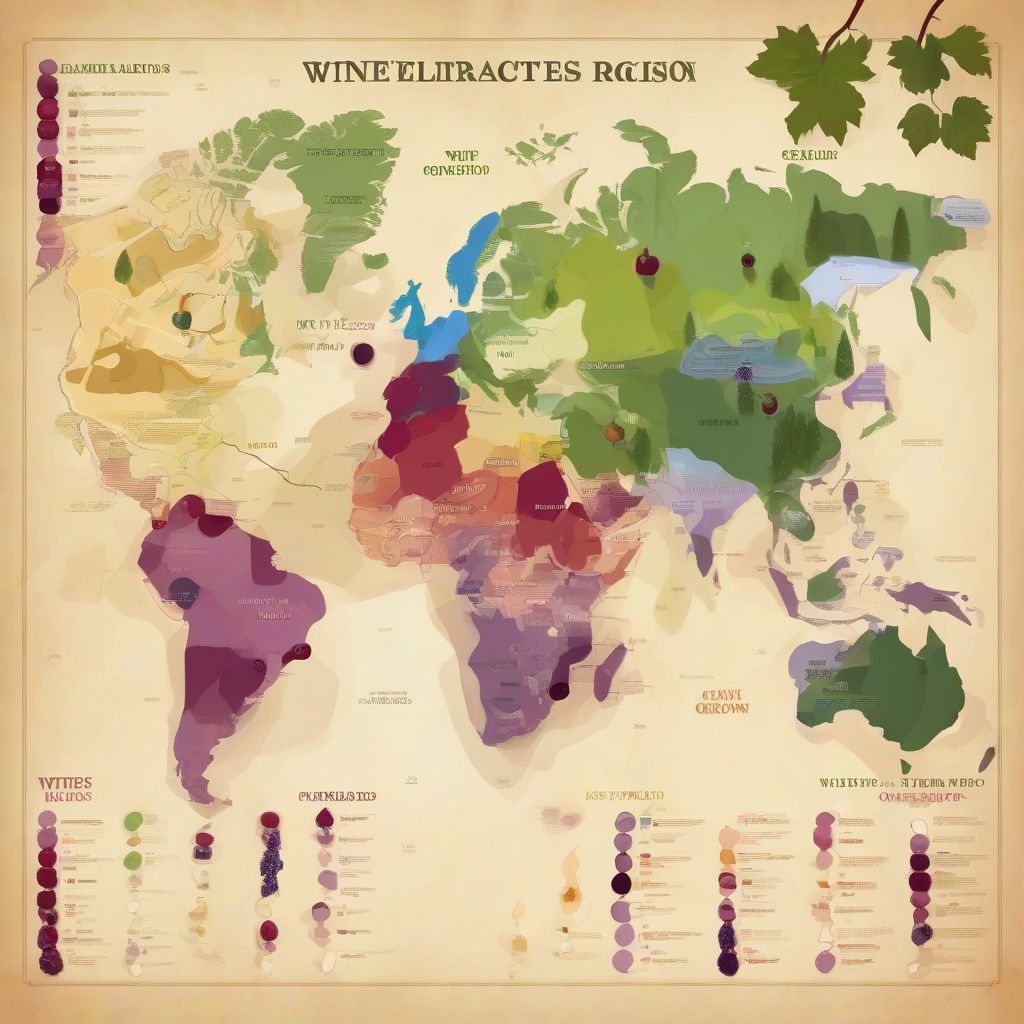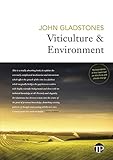Have you ever sipped a glass of wine and pondered the journey it took to get there? It’s a fascinating tale of nature’s artistry, where climate plays a starring role. Just like us, grapevines have their preferences when it comes to weather. The delicate balance of sunshine, rain, and temperature shapes the flavors and aromas that dance upon our palates.
So, grab your favorite glass and join me as we explore the intricate relationship between climate and wine production across the globe.
The Grapevine’s Comfort Zone: Understanding the Ideal Climate for Wine
Before we dive into specific regions, let’s talk about what makes a grapevine truly thrive. Picture this: warm, sunny days that ripen the grapes to perfection, followed by cool nights that help them retain acidity and develop complex flavors. This ideal balance is what winemakers refer to as “terroir.”
Key Climate Factors:
- Sunshine: Just like us, grapevines need their daily dose of vitamin D! Sunlight is crucial for photosynthesis, the process that allows vines to convert light into energy for growth and grape ripening.
- Temperature: Each grape variety has its preferred temperature range. Warm-climate grapes, like Cabernet Sauvignon and Zinfandel, thrive in regions with long, hot growing seasons. In contrast, cool-climate grapes, such as Pinot Noir and Riesling, prefer cooler temperatures and shorter growing seasons.
- Rainfall: While essential for vine growth, too much rain can dilute grape flavors and increase the risk of disease. Conversely, drought conditions can stress the vines and hinder grape development.
- Wind: A gentle breeze can be beneficial, helping to moderate temperatures and reduce humidity, which can prevent fungal diseases. However, strong winds can damage vines and affect fruit set.
A Journey Through Wine Regions: How Climate Shapes Flavor Profiles
Now, let’s embark on a global tour to discover how these climate factors influence wine styles in different regions:
1. France: The Birthplace of Terroir
-
Bordeaux: Known for its prestigious red blends, Bordeaux enjoys a temperate maritime climate. The Atlantic Ocean moderates temperatures, while the Gironde Estuary provides excellent drainage. These conditions are ideal for Cabernet Sauvignon and Merlot, resulting in full-bodied wines with elegant tannins.
-
Burgundy: Home to the world’s most sought-after Pinot Noir, Burgundy experiences a continental climate with cold winters and warm, humid summers. The region’s limestone-rich soils and unpredictable weather contribute to Pinot Noir’s complex aromas and elegant structure.
2. Italy: A Mosaic of Microclimates
-
Tuscany: The rolling hills of Tuscany boast a Mediterranean climate with hot, dry summers and mild, wet winters. These conditions are perfect for Sangiovese, the grape behind the iconic Chianti Classico, known for its high acidity, savory notes, and firm tannins.
-
Piedmont: Nestled in northwest Italy, Piedmont experiences a continental climate with cold winters and warm summers. The region’s Nebbiolo grape thrives in the foothills of the Alps, producing powerful, age-worthy wines with high tannins and complex aromas of rose petals, tar, and truffles.
3. California: The Golden State of Wine
-
Napa Valley: Known for its iconic Cabernet Sauvignon, Napa Valley enjoys a Mediterranean climate with warm, sunny days and cool nights. The region’s diverse soils and warm temperatures allow grapes to ripen fully, resulting in bold, fruit-forward wines with velvety tannins.
-
Sonoma Coast: Just west of Napa Valley, the Sonoma Coast experiences a cooler, more maritime climate influenced by the Pacific Ocean. This region excels in producing Pinot Noir and Chardonnay with bright acidity, delicate aromas, and complex mineral notes.
4. Emerging Wine Regions: Embracing Change
As the global climate evolves, we’re witnessing the rise of new wine regions in unexpected places:
-
England: Once known for its cool, rainy climate, England is experiencing warmer temperatures, making it increasingly suitable for sparkling wine production. English sparkling wines are gaining recognition for their elegance and finesse, often compared to Champagne.
-
Tasmania (Australia): This island state off the southern coast of Australia boasts a cool, maritime climate ideal for producing elegant Pinot Noir, Chardonnay, and sparkling wines. Its pristine environment and long growing season contribute to wines with pure fruit flavors and crisp acidity.
 Climate Impact on Wine
Climate Impact on Wine
Climate Change: A Looming Threat and an Opportunity for Innovation
While climate plays a crucial role in shaping the world’s great wine regions, climate change poses significant challenges for winemakers worldwide. Rising temperatures, unpredictable weather patterns, and extreme events like droughts and heatwaves threaten grape yields and quality.
However, amidst the challenges lie opportunities for innovation and adaptation. Winemakers are exploring new techniques, such as:
-
Drought-resistant grape varieties: Researchers are developing new grape varieties that can thrive in hotter, drier conditions, ensuring the future of wine production in vulnerable regions.
-
Precision viticulture: Using technology to monitor and manage vineyard conditions, winemakers can optimize irrigation, fertilization, and canopy management to mitigate the effects of climate change.
-
Alternative wine regions: As temperatures rise, winemakers are exploring new, cooler regions with the potential to become future hotspots for wine production.
Cheers to the Future of Wine
The story of wine is intricately intertwined with the story of our planet’s climate. As we move forward, understanding the impact of climate change on wine production is crucial for both winemakers and enthusiasts alike. By embracing sustainable practices and fostering innovation, we can ensure that future generations will continue to savor the diverse and delicious world of wine.
- Gladstones, John (Author)
- English (Publication Language)
- Subject to Change Wine. Co makes unique natural wines from organically-farmed vineyards, with native yeasts and without the use of adjuncts, preservatives (no SO2) or fining and filtration techniques.
- Mendocino AVA - neighboring Redwood Valley vineyards Kazmet Ranch and Upton Vineyards. The climate of the upland Redwood Valley experiences more of a diurnal temperature shift than surrounding appellations due to a gap in the coastal ridge which funnels cool Pacific air currents through to the Valley. This leads to a more gradual ripening of refined and complex fruit.
- 【Dual Zone Wine Refrigerator】Ca'Lefort Wine Fridge large capacity holds at least 46 bottles of wine (standard 750ml). The minimum temperature is 40°F, with the smart digital panel, you can adjust the temperature accurately by 1°F. The hardness, eco-friendly and durable removable shelves (made of sapele wood) make it easy to access the red wines, and by adjusting the shelves, you can place different sizes of red wines. You can choose the amber/blue/white LED according to different moods.
- 【Powerful Cooling System】We utilize compressor refrigeration and internal air cooling system. Comparing with cheap refrigeration refrigerator, compressor refrigeration is faster, more efficient and more energy-saving, and the internal air-cooling system allows cold air to circulate throughout the inside of the refrigerator. And the refrigerator has a power failure memory function, after powering on again, it will return to the previously set temperature.
- Hardcover Book
- Goode, Jamie (Author)
- Gladstones, John (Author)
- English (Publication Language)
- Poni, Prof Stefano (Author)
- English (Publication Language)
- ENJOY – Only PureWine Supports and may alleviate the most common side effects
- THE ADVANTAGE - No other purifier filters the preservatives that trigger those unwanted allergies and sensitivities. The Wand purifies ALL red, white, and sparkling wines. Enahnces the natural flavor, aroma, and color
- Maximum capacity of 173 wine bottles - Temperature-controlled wine storage helps preserve the optimal flavor and aroma of your favorite red, white, or rose wines
- Compressor cooling - Accurate temperature management and vibration-free cooling
Raise a Glass and Join the Conversation
What are your favorite wine regions and how do you think climate change will impact them? Share your thoughts and experiences in the comments below!










